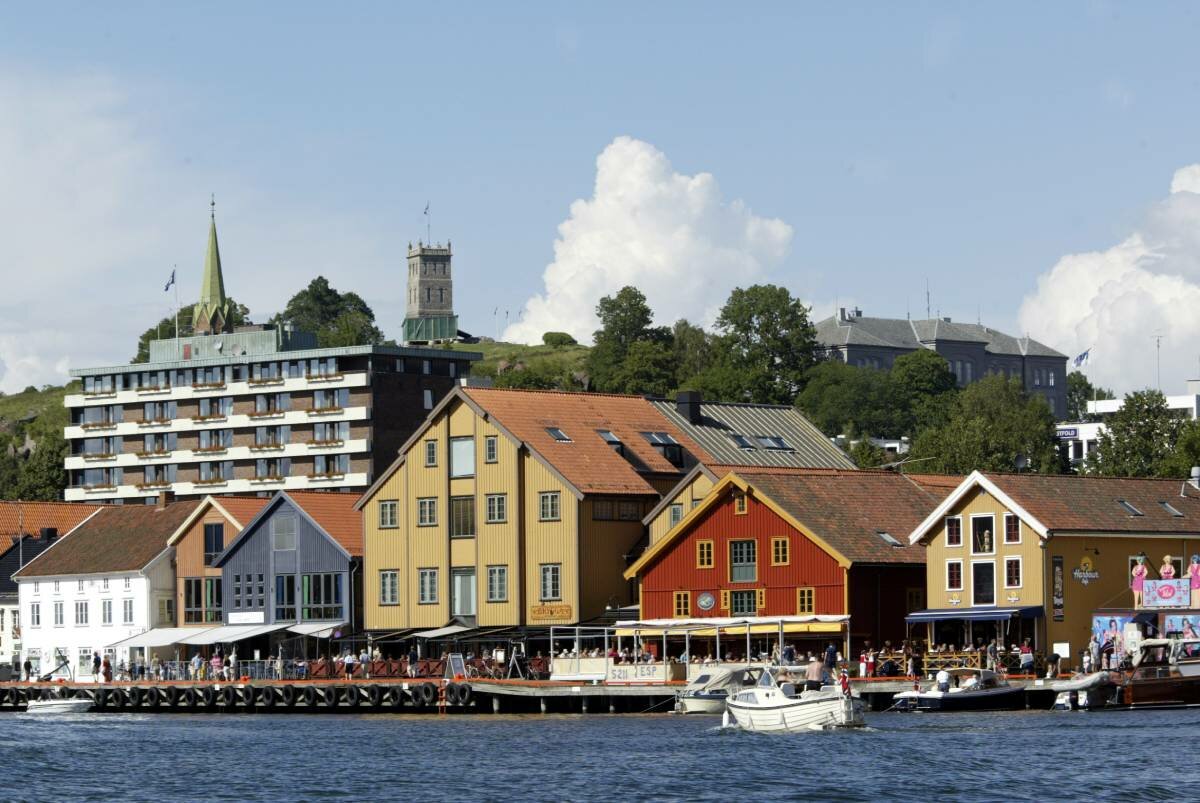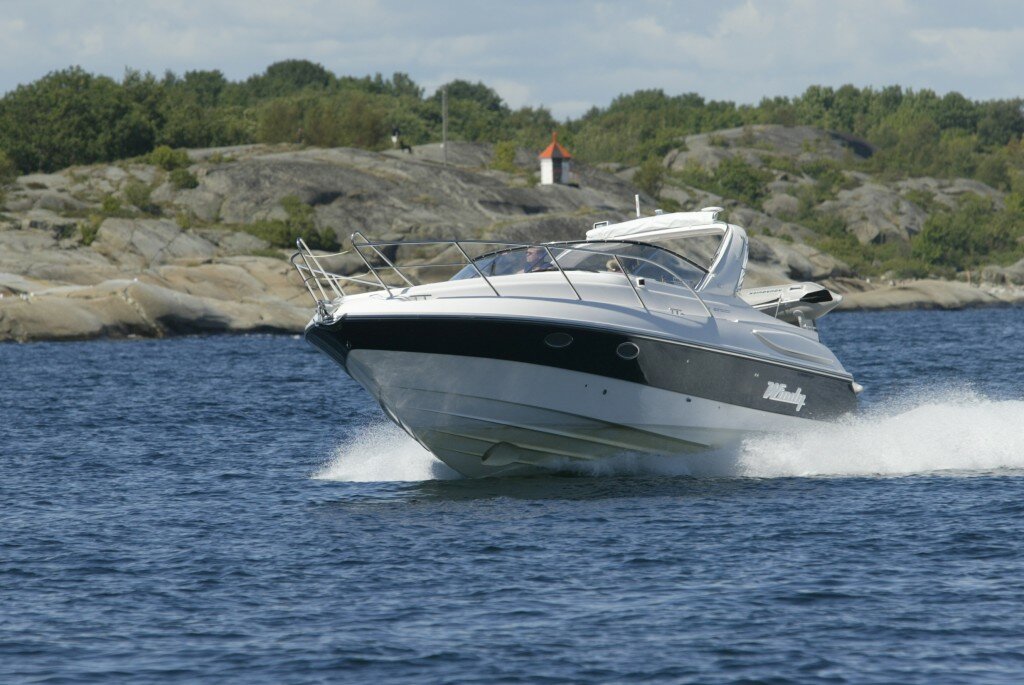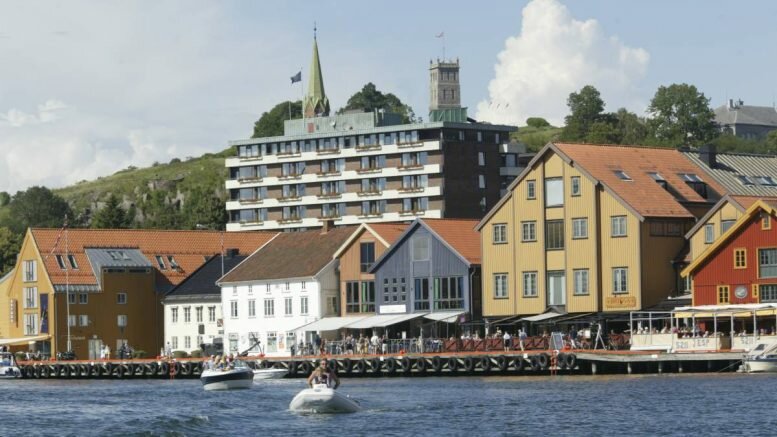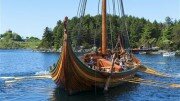Tønsberg has been labeled one of Norway’s favorite summer towns. From a deep history that stretches back to the Viking Age to a huge pop and rock music festival, this seaside trading city has a wealth of cultural and historic attractions for everyone.
One of Norway’s favorite destinations during the summer holidays
Nestled at the southern end of the Oslo fjord, lies the historic town of Tønsberg. About a 100-kilometer drive southwest of Oslo, this maritime town has been settled since the late 9th century. Though only about 54,000 people live here, its importance in Norwegian history is far greater than its population.
During the summer months, the town swells with tourists, from near and far, who flock here for history, music festivals, the nightlife or to simply cruise around the surrounding islands on a boat. This mix of tradition, cultural events, and natural beauty is the reason it remains one of Norway’s favorite towns to visit during the summer holidays.
Norway’s oldest city was founded by Vikings
Tønsberg is the country’s oldest town and takes pride in the fact its founding is steeped in legend and myth. According to the chronicler of Norse sagas, Snorri Sturluson, the town was founded by King Harald Fairhair sometime just after the great Viking naval Battle of Hafrsfjord in the late 9th century BCE. Though records are somewhat sketchy with the exact details, the town nonetheless celebrated its 1,000-jubilee in 1871 with a further larger celebration just over 50 years ago in 1971.
The city was an ancient capital of Norway with the King, and his court, residing at what is now the location of Jarlsberg Manor on the grounds of the farm, Haugar. This was the location for a sort of proto-parliament, the Haugting, which was an important center for the proclamation of the Kings of Norway. During the 13th century CE, King Haakon Haakonson built a small tower on Slotsfjellet (Castle Mountain) which was soon turned into an impregnable and large fortress guarding Tønsberg harbor.

Rising from the ashes to international prominence
During the early modern period, the town was an important source of trade, as it was strategically placed near Oslo. This allowed the town to boom but in 1536 a fire ravaged the streets, burning most of the town down. It remained mostly underdeveloped and small until the beginning of the 19th century when the town became one of the most important whaling centers in Norway.
Whaling brought a new lease of life to this town and it soon became full of a bustling port, full of lively commerce and trade. With the whaling industry booming in Norway by the mid-century, Tønsberg was the premier location for skilled whaling expertise and shipping in both the Arctic and Antarctic oceans. Norway had a monopoly for whaling in Europe until 1883 and this helped Tønsberg develop its maritime infrastructure further.
Berg Concentration Camp and modern revival
Perhaps the darkest period in the history of Tønsberg was during the Second World War. Norway was invaded and occupied by Nazi Germany. With help from the Norwegian collaborator, traitor, and Nazi-approved nominal head of Norway, Vidkun Quisling, a concentration camp was built at Berg, near Tønsberg. It was built to have a capacity of 3,000 but was never finished and is unique as it was the only concentration camp in Norway to be run entirely by collaborating Norwegians.
Some 280 Jewish prisoners and 850 political prisoners spent time at Berg concentration camp. Most of the Jewish prisoners were deported to German or Polish concentration camps. Of the 280 Jewish prisoners originally sent to Berg, only 7 survived the war. Following Norway’s liberation, the camp served as a prison for Norwegian collaborators including Vidkun Quisling.
Since the end of the Second World War, the town grew into a city and is now Norway’s 10th most populous with over with an estimated population in 2020 of 57,794. Over the past 50 years, the town has experienced population growth and diversity along with new maritime industries replacing whaling. Tourism is now an important source of income for the city.
The Oseberg Viking Ship
One of the most important archaeological finds in Norway was discovered just near Tønsberg in 1904. Under the supervision of Professor Gabriel Gustafson, a mound was excavated to find an intact 21-meter-long ship. The “Oseberg Ship” (Osebergskipet) was built in 820 CE and buried in Slaugen, just near Tønsberg about a decade and a half later.
The ship was laden with buried treasure, goods, sacrificed animals, and even a burial chamber for two women. Several tapestries were also stored in the ship. The find was so important that it was transported to its own special museum, the Viking Ship Museum (now currently being refurbished) in 1926. The ship has become an important cultural symbol of Norwegian history and has helped put Tønsberg on the map for archaeological excavations.
Slottsfjell Festival
Aside from its Viking history, Tønsberg has a vibrant and modern cultural scene. No more is this evident than the Slottsfjell Festival which takes place every year. Held annually in mid-July from 2003, the pop and rock music festival is now an important source of income for the city and a chance for world-class acts to play amongst the ruins of the medieval fortress of Tunsberghus.
The music festival has hosted a wealth of Norwegian musicians and bands and is increasingly attracting more and more international acts. Phoenix, Gossip, Bo Kaspers Orkester, Wolfmother, and Foals are just some of the major bands that have played in recent years.
This year’s festival will be headlined by both Norway’s own Karpe Diem and Scottish superstar, Lewis Capaldi. There is also a focus on food, drink, and cultural events for those that are less musically inclined.
A historic town center and culturally refurbished harbor
Although Tønsberg has a history of over a millennium, there are almost no buildings left from the Medieval period. However, Tønsberg has kept its historic center very much intact. Tourists can wander through the town which has some very well preserved wooden buildings and houses. Furthermore, much of the old harbor, which was the epicenter of the whaling industry, has now been transformed into a modern cultural hotspot full of restaurants, bars, and nightclubs. Huge swathes of the city are heritage listed, especially the old whaling warehouses that line the harbor.
Oseberg kulturhus takes pride of place on the harbor-wharf. This is a cultural house and hotel with a large conference hall and facilities. It has hosted a wide range of concerts, festivals – including the Medieval Festival (which takes place this year between 3 – 6 June), fairs, conferences, and exhibitions. Its construction shows that Tønsberg is very much a modern city despite its ancient roots.

A good day trip from Oslo, especially in the summer
As Tønsberg is only an hour from Oslo, and on the main road to Norway’s southern coast, it is a popular destination for local and international tourists every summer. With average temperatures a pleasant 20-25 degree average in July and August, this is just another reason why tourists flock here to escape the summer heat in the capital city.
Tønsberg is serviced by the Vestfold train line which runs from Drammen to Eidanger but connections can be made in Drammen to travel further to Oslo. It is also only a 92-kilometer drive, down the E18, from Oslo. There are also several ferries that depart from Tønsberg and visit the nearby islands including Notterøy.
More information on Tønsberg can be found on the official tourist page here.
Source: #Norway Today / #NorwayTodayTravel
Do you have a news tip for Norway Today? We want to hear it. Get in touch at [email protected]






Be the first to comment on "Tøngsberg: Impressive Viking history in Norway’s favorite summer destinations"